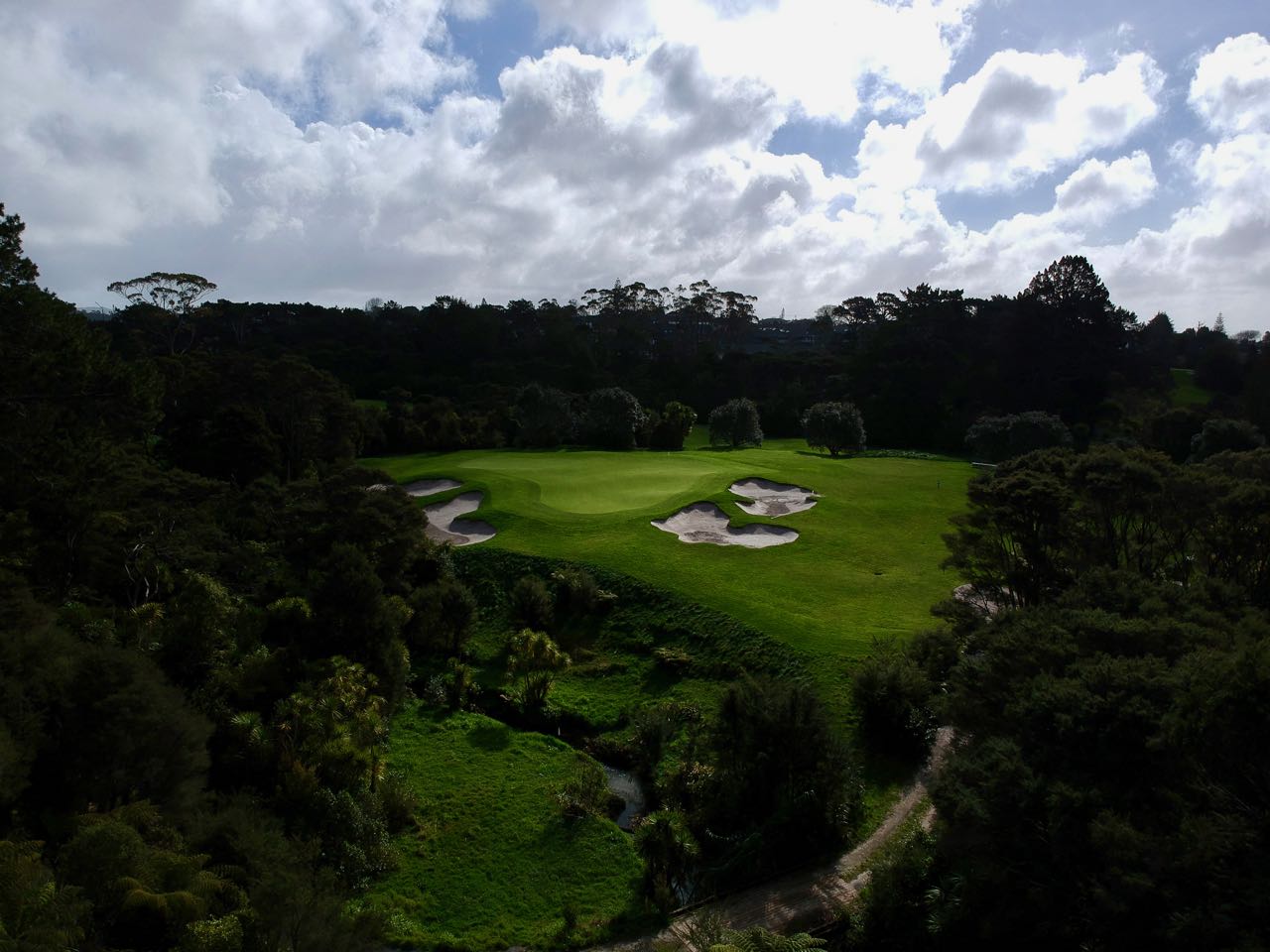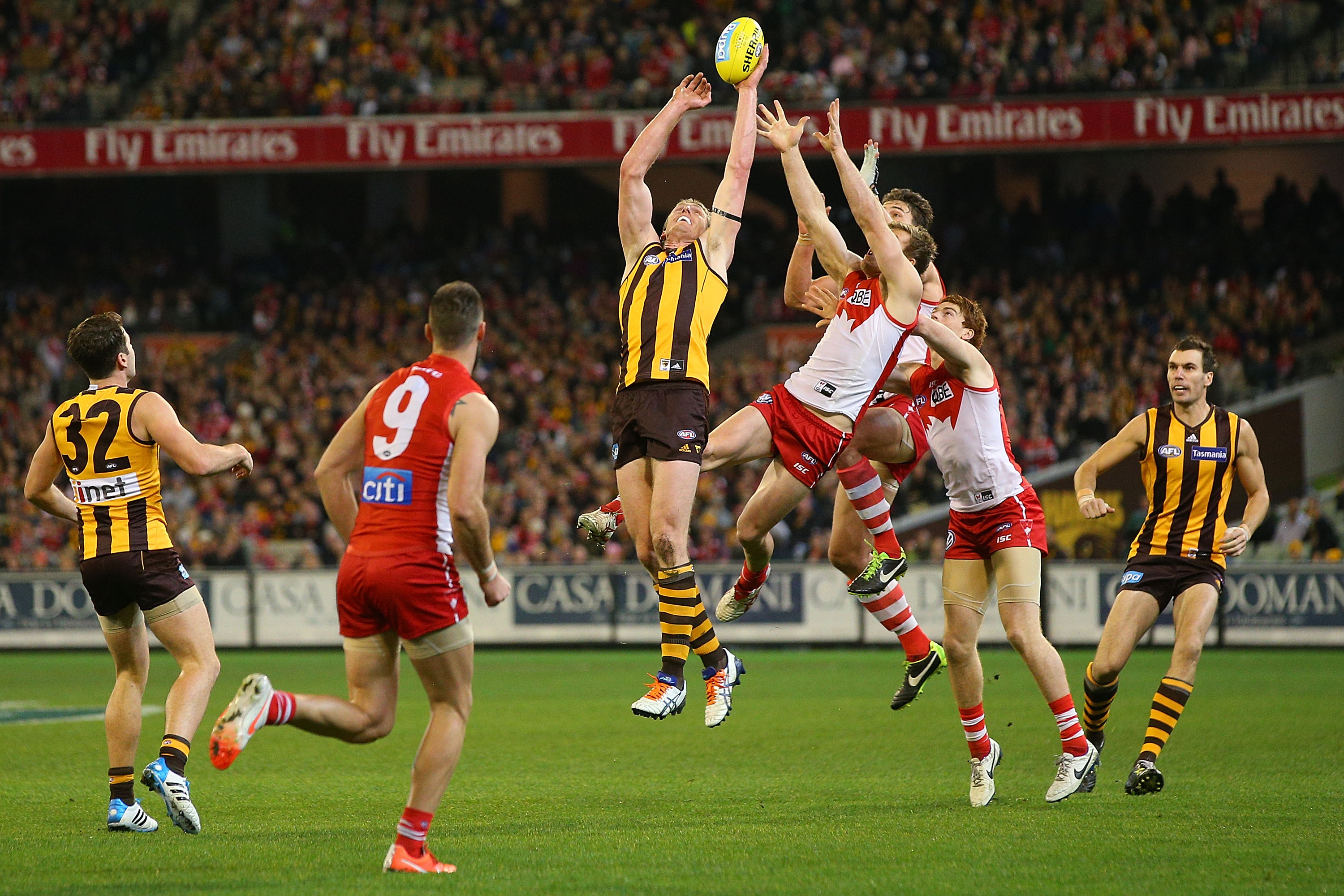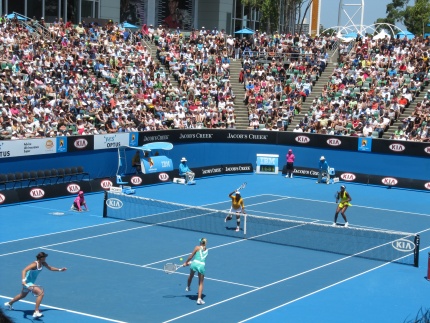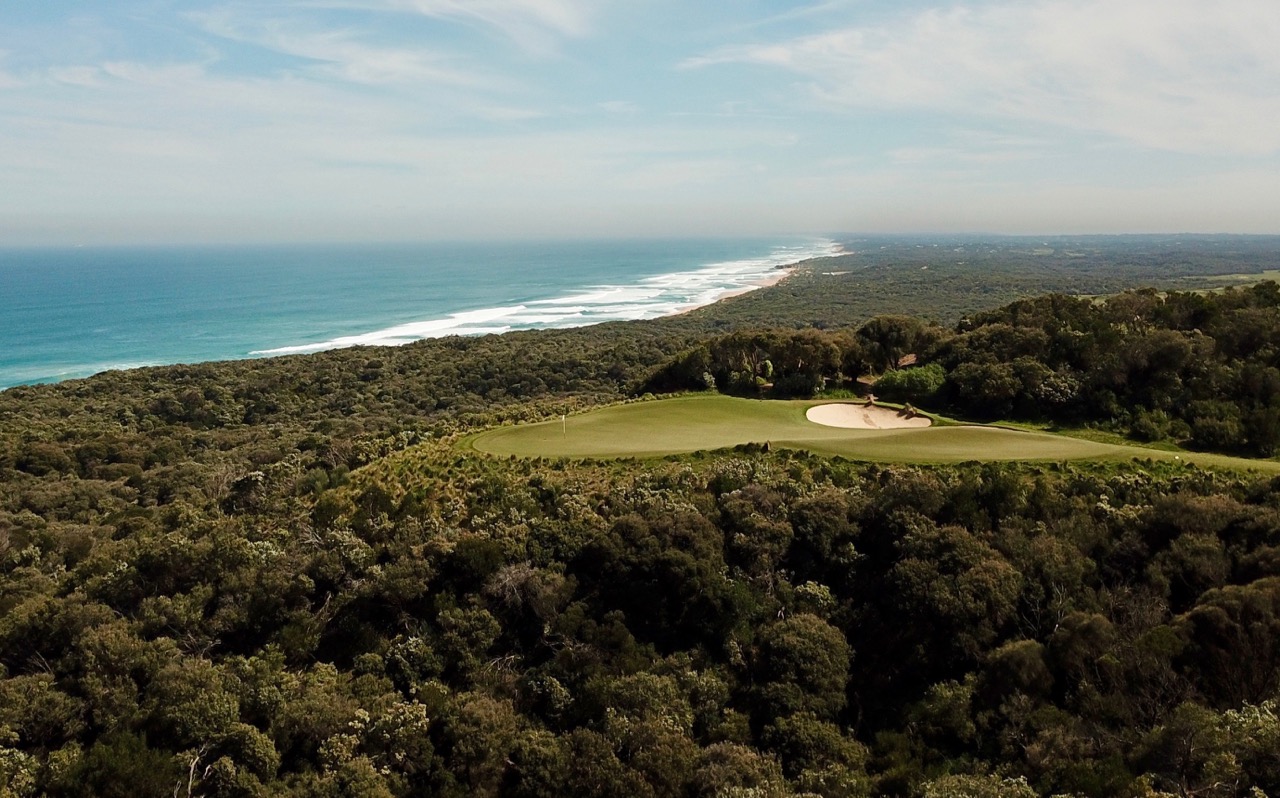 Titirangi GC- 14th hole
Titirangi GC- 14th hole
All my life I have been a keen sportsman, and fan.
Although I follow many sports, I have always been passionate about AFL football, and have had a lifelong interest in tennis and golf- from playing to observing…
I find it interesting to see how these sports are changing over time as improved strength, fitness and endurance, better techniques, and advanced technology are impacting on the way games are played.
In AFL football the size of the ground- the playing field- does not change, but the speed of play, the endurance of the players, and the need to protect players from high impact collisions is bringing about ongoing changes to the rules of the game. And AFLX will present a shorter faster version of the game this year which may change AFL as 20/20 did for cricket

I thought the 2018 Australian Open Tennis was very entertaining, but note that many of the world’s top players are succumbing to long term injuries. They play year round these days, all over the world, and the playing surfaces are predominantly hard courts presenting a true bounce. Elite tennis players put enormous hours in on court training and are extremely fit. Players now have incredible defensive skills and are able to continue retrieving the most unlikely shots. Rallies can be long. The slower the court, the longer the rallies and the matches. Over time this can cause injuries. Faster courts may lead to shorter rallies, but can also lead to a dominance of the serve, and at times a more one dimensional game.

Perhaps at some stage, tennis will look at lessening the dominance of the serve, and changing the rules of the game to allow only one serve, or perhaps only a few second serves each game? In this way players could play on faster surfaces, have shorter rallies, be less susceptible to long term injuries, and not be dominated by big serving all the time. Or perhaps technology will produce a playing field more forgiving on the athlete, yet still providing a reliable playing surface...
Golf too, has it’s issues as technology, fitness, and techniques all lead to longer hitting.
It seems obvious to me that we cannot continue to allow the many wonderful classic golf courses around the world to become redundant because they are too short. We simply need to wind back the impact of technology- the clubs and ball- so good players can continue to play on the courses where history has been made.
But like all sports golf is fighting for it’s future. As the baby boomers move on golf must remain relevant to the younger generations who are time poor, and have so many options demanding their attention. Nine hole golf is sure to become more popular. But while the technology needs to be controlled for the professionals, the local club member needs all the help he or she can get. Many come to appreciate the game in their maturity and simply do not have the skill sets to dominate the courses or even cope with them. So while the rules will not change substantially as in other sports, what does need to evolve are the playing fields.
To appeal to the new generation of golfer, rounds of golf need to be time effective, and enjoyable- this means pace of play is crucial, and the less time spent searching for golf balls the better.
And so we are seeing a clear separation in the way golf courses are being presented- and it seems to me this will become ever clearer.
The world famous courses everywhere around the world share some characteristics- they are challenging, beautiful, and in constant demand from visitors and members alike. These courses have full memberships and have financial stability, and work hard at maintaining the challenges- without being overly concerned about the pace of play or the attraction for the novice golfer.
 The National Golf Course presents challenging, picturesque courses..
The National Golf Course presents challenging, picturesque courses..
On the other hand suburban clubs all over the world are working hard to keep viable membership numbers and attract new golfers. They need high playing numbers to survive as membership fees need to be affordable. High playing numbers means pace of play is important- and to maintain pace of play courses must become simpler in presentation with rough gradually disappearing and carries over hazards minimised. Although this trend has it’s obvious merits, it also risks losing the interest of the more experienced golfers who seek a more challenging course!
So our playing fields for golf are evolving with the times, and will continue to evolve.
Personally I think that the ‘dumbing down’ of local courses could be avoided to some extent by the introduction of more shorter tee options like those used by US Golf Kids, or the ‘Scoring tees’ suggested by architect Jan Bel Jan in the USA. In this way novice golfers would still have to negotiate hazards and rough, but with considerably less distances to carry. It would be more challenging and more rewarding and prepare them for golf on all manner of courses around the world- surely one of the great joys of the game?
Other options include the introduction of more short courses or par 3 courses like that recently opened by The Eastern Golf Club. With multiple tee options these short courses can be a great place to learn the game, and fun for all levels of golfer.
Peter Wood
The Travelling Golfer
January 2018
